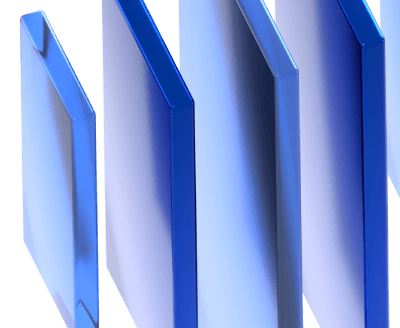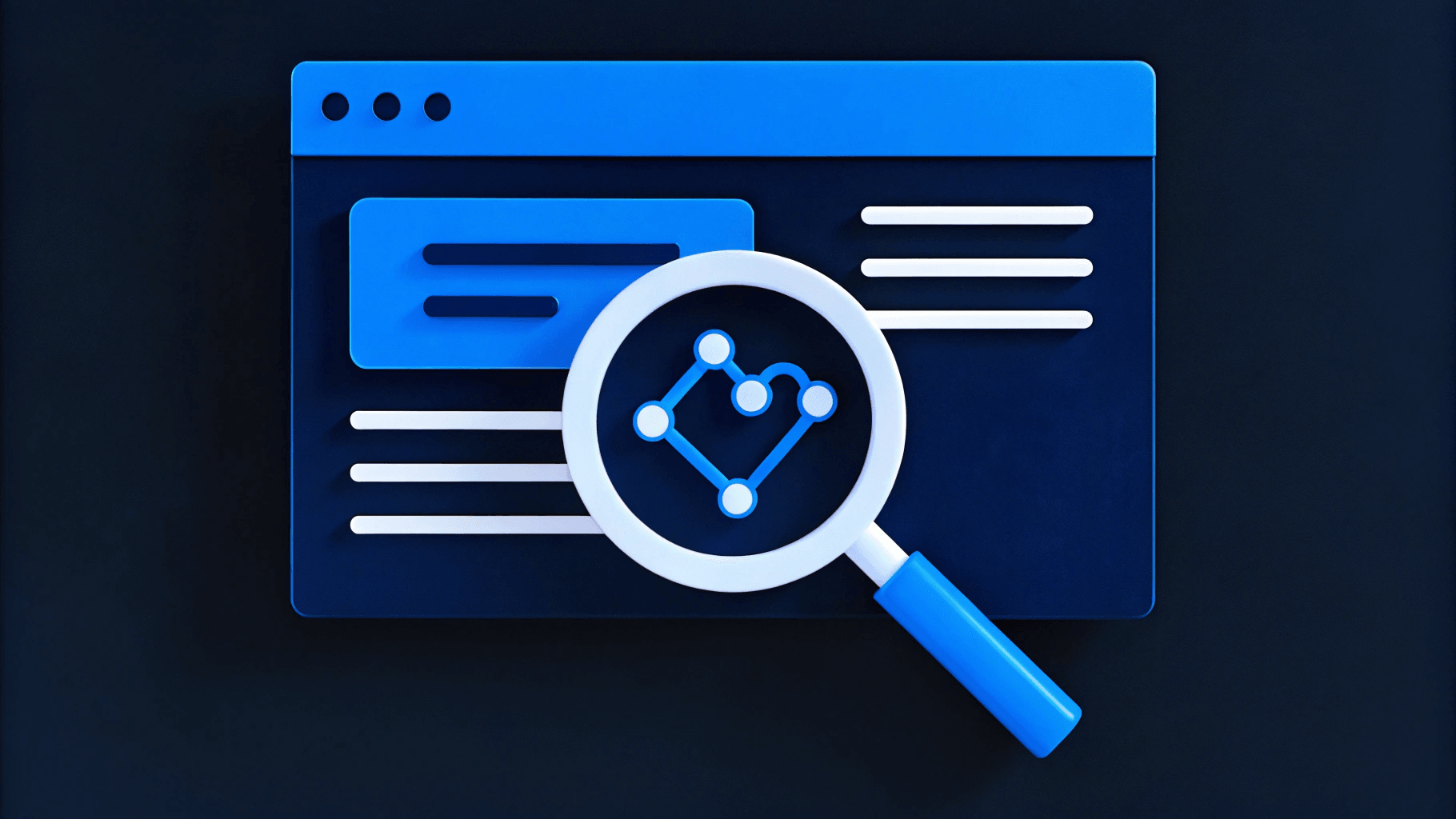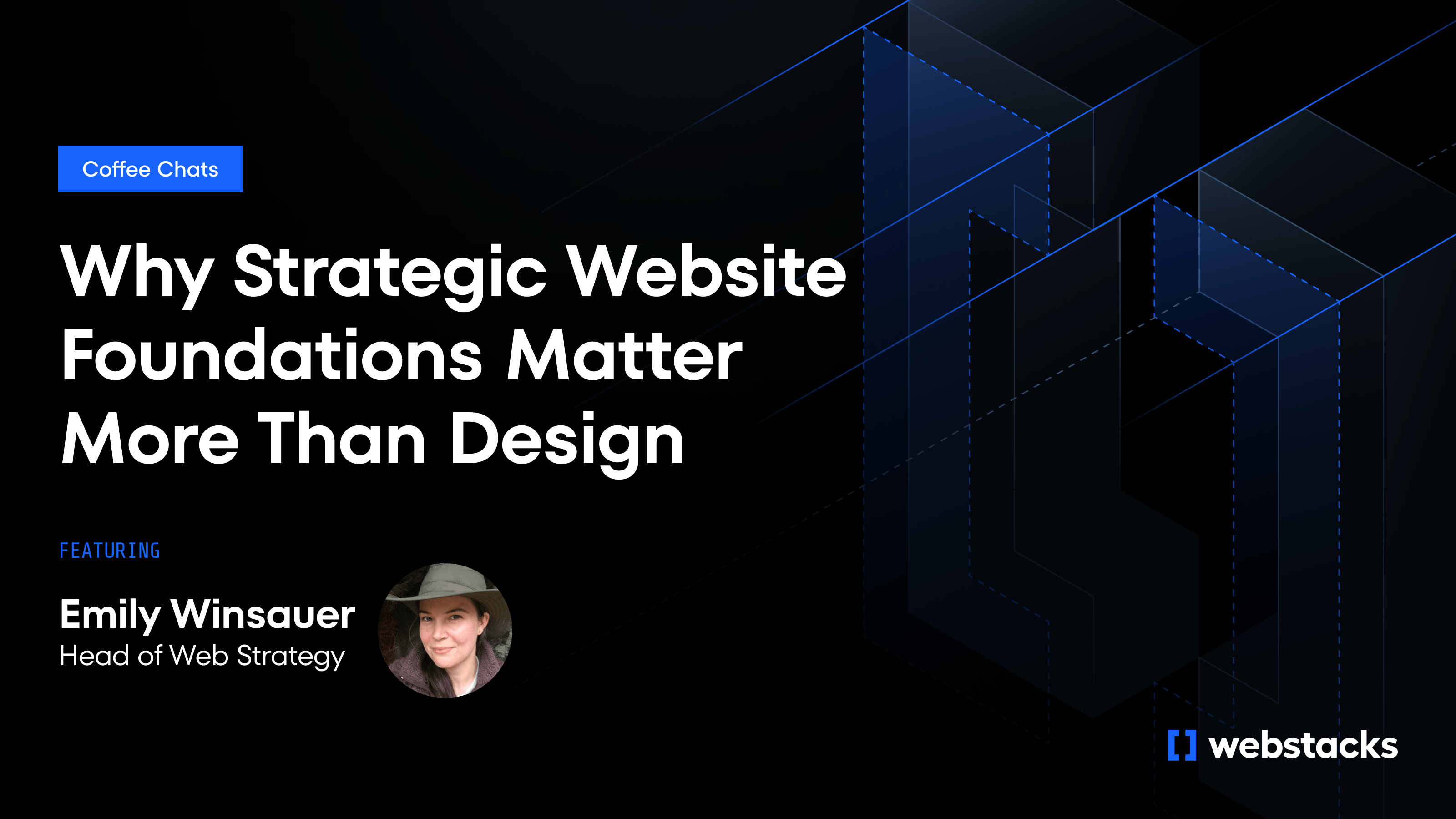For high-growth B2B companies, a homepage redesign is important for building a scalable digital platform that drives pipeline.
Since we’re a web design agency, Webstacks treats redesigns as infrastructure upgrades. We build modular, composable homepages rooted in atomic design principles and powered by headless CMS platforms, so you can scale without bottlenecks.
In this guide, we’ll share our 10 strategic tips to help you build a great-looking homepage.

1. Stop Thinking of Your Homepage as a Brochure
Many B2B homepages still follow a dated model: a big hero image, a vague tagline, a few product blurbs, and a “Contact Us” button. It looks nice, but it doesn’t perform. Why? Because it’s built like a brochure, not a growth engine.
Your homepage is a conversion tool. It should immediately orient visitors, guide them through a meaningful journey, and serve multiple personas and intent paths. That requires clarity, hierarchy, and flexibility.
For a practical example, check out how we helped OctoAI redesign their homepage and other parts of their site.
2. Design for Modular Scalability
Treating your homepage redesign as a one-time project, rather than an evolving system, turns it into a bottleneck the moment your strategy changes.
Modern B2B teams need a flexible homepage that allows for fast iteration, A/B testing, and cross-functional collaboration. That’s where modular website design comes in. Built on atomic design principles, modular systems allow marketers to mix, match, and rearrange pre-built components to create new experiences. And they don’t need developer help.
For example, a modular homepage might include hero sections, testimonial sliders, customer logos, feature grids, CTAs, and resource cards as individual components.
3. Build Around Outcomes
Too many B2B homepages are structured like internal org charts: “About Us,” “Products,” “Solutions,” “Contact.”
But your visitors don’t care how your company is organized—they care about solving their problems. If your homepage is built around departments instead of desired outcomes, you’re making them do all the work.
Instead, design your homepage to align with user intent and lifecycle stages.
What does someone evaluating your product need to know? How do you guide a returning visitor deeper into your content ecosystem? A structured homepage leads with clarity and intent, not internal politics.
4. Prioritize Performance and SEO From the Ground Up
Performance and SEO are growth fundamentals that should be baked into your redesign from day one.
A homepage that looks sleek but loads slowly is a liability. And ranks poorly in search results.
To avoid this, you can build your homepage with Next.js and deploy them on Vercel. This setup improves load times through server-side rendering and static site generation, while global content delivery ensures fast performance for users everywhere.
For SEO, implement semantic HTML, structured content, optimized metadata, and schema markup. These technical foundations help search engines index your site accurately and improve rankings for key inbound topics.

5. Redesign Your Homepage for Marketing Control
A homepage redesign that leaves marketing teams reliant on developers for updates is a missed opportunity. For B2B brands, content operations need to match the pace of your go-to-market strategy.
Marketers should be able to update messaging or test CTAs without waiting on dev cycles.
We recommend integrating headless CMS platforms like Contentful, Sanity, or Storyblok and using content modelling so non-technical teams can manage updates independently.
A UX redesign should align with how your team works, not just how the homepage looks. When content ops are built into the foundation, your team moves faster and gets more from the redesign long after launch.
6. Speak Directly to Your ICP
Your homepage is often the first touchpoint for potential buyers, so it needs to be up to date.
Messaging that once worked for early adopters or niche markets may now fall flat as your company moves upmarket, expands features, or shifts its go-to-market motion.
A homepage redesign is your chance to realign your brand voice, value props, and visual storytelling with the ICP you’re targeting now, not the one you launched with.
Here’s how:
- Use your ICP’s language: Avoid internal jargon or product-heavy terms. Mirror the language your target buyers use to describe their pain points and goals.
- Address specific challenges: Lead with the problems your ICP is actively trying to solve. For example, highlight "faster onboarding for distributed teams" if targeting enterprise HR leaders.
- Show social proof that matches their industry or role: Feature relevant logos, case studies, or testimonials from companies or roles your ICP identifies with.
- Make benefits obvious, not just features: Connect your product’s capabilities directly to outcomes that matter to your ICP, like reducing operational costs or accelerating time-to-market.
7. Combine Redesign With CMS Replatforming (When Needed)
Sometimes, a homepage redesign isn’t enough. Because the real bottleneck isn’t your layout, it’s your CMS. Legacy platforms like WordPress or custom monoliths often slow down content ops, limit flexibility, and create technical debt that drags on performance.
That’s why we often pair homepage redesigns with CMS migrations, but only when it drives real business value.
Modern, headless CMS platforms like Sanity and Storyblok give you the flexibility to manage your homepage like a system, not a set of static pages. Combined with modular design, this setup lets marketing teams move faster while giving devs the structure they need to scale.
8. Launch Fast and Iterate Often
The traditional agency model of vanishing for 6–9 months and returning with a brand new homepage doesn’t work anymore, especially for high-growth B2B teams who pivot quickly and need to validate fast.
That’s why we advocate for an MVP-first approach.
Launch the essentials fast, gather real user data, and iterate based on what actually drives engagement and conversion. This agile mindset gets you to market faster and makes your homepage smarter with every update.
9. Use UX to Tell a Strategic Story
A polished homepage is nice, but it still needs purpose. Great UX doesn’t just look good; it guides visitors through a clear, compelling story that mirrors your GTM strategy and drives them toward action.
For B2B companies, your homepage needs to communicate who you are, what you do, who it’s for, and why it matters—in under 30 seconds. That’s a narrative challenge, not just a design one.
One way to build this narrative is by mapping your homepage sections directly to key stages of your buyer’s journey.
Start with a strong headline that speaks to your ICP’s core problem, follow with supporting value propositions, social proof like customer logos or testimonials, and end with clear CTAs that align with where the visitor is in their decision-making process.
Use visual hierarchy (bold headlines, concise copy, and scannable layouts) to control the pace at which visitors absorb information.
Every section should answer the question: What does my ICP need to know here to move forward? This ensures your homepage is built to strategically guide visitors toward action.
10. Make It Easy to Evolve
A homepage redesign should be the beginning of an agile, scalable system that evolves alongside your business. Too many teams launch beautiful new homepages and then freeze.
Why? Because they’re hard-coded, dev-dependent, or lack a clear process for ongoing iteration.
Your homepage should grow with your product, brand, and go-to-market motion. That means designing with flexibility, building on a composable stack, and empowering your team with the right tools and workflows.
Your Homepage Is the Front Door to Growth
A homepage redesign helps you create a scalable, high-performing platform. In B2B, that means enabling marketing agility, aligning with your evolving ICP, improving performance, and setting your team up to move fast post-launch. A comprehensive website development roadmap ensures that all these elements come together.
At Webstacks, we don’t do one-size-fits-all. We partner with high-growth companies to build homepages that function like digital products. They are modular, measurable, and built for speed.
Whether you’re preparing for a rebrand, pivoting your GTM, or unblocking your content ops, we’ll help you rethink your homepage as a strategic asset.




